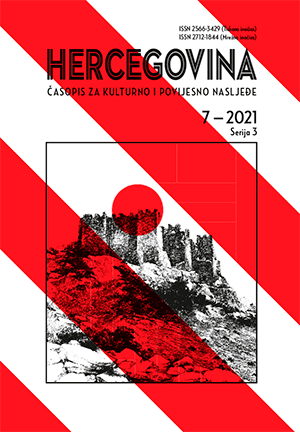Stupac iz Donje Zgošće kod Kaknja: analiza i interpretacija ikonografskih sadržaja, historijskoga i naručiteljskoga konteksta
The pillar from Donja Zgošća near Kakanj: analysis and interpretation of its iconographic content, historical and patronage context
Author(s): Ema MazrakSubject(s): Cultural history, Visual Arts, 15th Century
Published by: Filozofski fakultet Sveučilišta u Mostaru - Studij povijesti i Hrvatski institut za povijest - Zagreb
Keywords: pillar; iconography; Christian motifs; Donja Zgošća; altar; stecaks; brothers; epitaph;
Summary/Abstract: This paper offers a critical review and summary of the results of previous interdisciplinary studies of the pillar from Donja Zgošća near Kakanj. Comparative examples of the decorative motifs on stecaks and other relevant artistic material were consulted for this new iconographical analysis and interpretation of the reliefs on this fine tombstone. The shape and original position of the pillar, selection of motifs and its relationship with the large gabled tombstone from the same necropolis, point to a single iconographic programme which sought to contextualise the role of patrons as well as the teleological ductus of that time. The presentations of the Four Gospels within the arch of the church portal, the unique scene of an altar, and the two tau crosses on sun discs over a Calvary base, are directly associated with the epitaph on the pillar and the iconographic content of the gabled tombstone. A review of the reading of the epitaph on the plaster cast of the pillar in the Glyptotheque in Zagreb revealed three names - Dragiša, Batalo and Tvrtko - and it can also be read as a reference to two brothers at the beginning of the inscription. This is the context for the attempt to reconstruct the original relationship between the patrons and the three deceased. The pillar and the gabled tombstone both date from the very early 15th century, which once again raises the possibility that the monument was erected posthumously to two members of the Kotromanić dynasty.
Journal: Hercegovina. Časopis za kulturno i povijesno naslijeđe (od 2018)
- Issue Year: 2021
- Issue No: 7
- Page Range: 7-49
- Page Count: 43
- Language: Croatian

